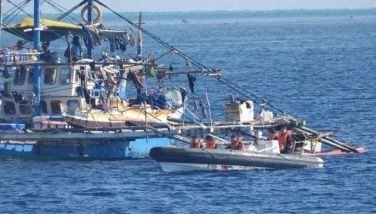Pope Franciso on major church issues

Jorge Mario Bergoglio was born in Buenos Aires, Argentina on Dec. 17, 1936, the son of Italian immigrants. He took the name of Pope Francis on the day he was elected as the 266th pontiff of the Catholic Church in March 2013. He was a great admirer of St. Francis.
He has told the story of his life for the first time through a very unique way. He has reviewed the events that have made their mark on humanity over the past 80 years, intertwining these with the story of his life.
“Life: My Story through History,” published in 2024 by Harper Collins, is actually an autobiography Pope Francis wrote with Fabio Marchese Ragona in Italian. Ragona is Vaticanist for the Italian Mediaset media group. In the book, Pope Francis shares the origin of his ideas that have characterized his papacy. There is no question that Pope Francis has become a controversial figure even within the Church. Although it did not seem to have made too much of a global event, the Vatican recently excommunicated Archbishop Carlo Maria Vigano, the Vatican’s former ambassador to the United States, after finding him guilty of schism. Vigano refused to recognize the authority of Pope Francis and the liberal reforms enacted after the Second Vatican Council. Vigano is one of the most vocal conservative critics of Pope Francis, whom he has publicly called a “false prophet” and a “servant of Satan.” Vigano has also publicly embraced right-wing conspiracy theories and has praised former president Donald Trump.
This archbishop has been a vocal critic of gay rights and has adopted anti-vaccine positions because he claims the vaccines to be a crime against humanity. He has also condemned what he called as the pope’s “adherence to climate fraud.”
This recent book on his life has become more important because of the need to understand the growing conflict between the dominant liberal population of the Church and the very vocal ultraconservative clergy. There is also a growing number of Catholic clergy that believes that Pope Francis has not gone far enough to bring the Church into the modern world.
The book has 14 chapters with “The Outbreak of World War II” as the first chapter. A single column is much too restrictive in space to discuss all of the chapters. I will focus only on two chapters: Chapter 12, “The Resignation of Benedict XVI” and Chapter 14, “A History Yet to be Written.” But the book is must reading for Catholics and non-Catholics alike.
In Chapter 12, the most important part is the Conclave that elected Francis as the new pope. Before the voting, Francis gave a three-minute speech which he believed was the turning point after several votes. In his remarks, he enunciated that the reason for the Church’s existence is evangelizing, which implies apostolic zeal. He contrasted the “evangelizing Church that comes out of herself” and “the worldly Church that lives within herself, of herself, for herself.” According to Francis, this is the reason for possible changes and reforms.
In the last chapter, Pope Francis spends time contemplating on the future of the Church. He says: “When I think about the Church to come, I am reminded of Joseph Ratzinger’s theory. He spoke of a Church that will move forward but in a different way. It will be smaller, more distinctive institution… saying that what awaited us was a Church that would start afresh from a position of minority status, with few adherents placing faith at the center of all experience; a more spiritual, poorer Church that will become a home for the indigent, for those who have not lost sight of God.” (Ratzinger was eventually elected head of the Church, as Pope Benedict XVI.)
Pope Francis also said that in the Church “… we must fight the scourge of clericalism: it is a perversion that may destroy the Church because instead of promoting lay people, it kills them by exercising power over them.”
But clericalism can also infect the laity. There are people who ask to be clericalized but “… stay on the margins of decision-making so as not to take responsibility.”
The pope imagines a Mother Church “… who embraces and welcomes everyone, even those who feel they are in the wrong and have been judged by us in the past.” He is referring specifically to homosexuals and transsexuals who are rejected or persecuted. Francis says: “I just want to say that God loves everyone, especially sinners.” While he reiterates that the Church does not recognize same-sex marriage, he says: “Civil unions are another matter, and on this subject, I have said on many occasions that it is right that these people who experience the gift of love should have the same legal protections as everyone else.”
I found this book to be extremely readable and at the same time enlightening. There are many issues that were clarified and my understanding of the Church teachings have become deeper. It seems to me that the main message of Pope Francis in the book is: “The most important lesson must never be forgotten: we can reread the story of our own lives to make remembrance, and to be able to pass something on to anyone listening. To learn to live, however, we must all of us learn to love.”
* * *
Email: [email protected]
- Latest
- Trending




























